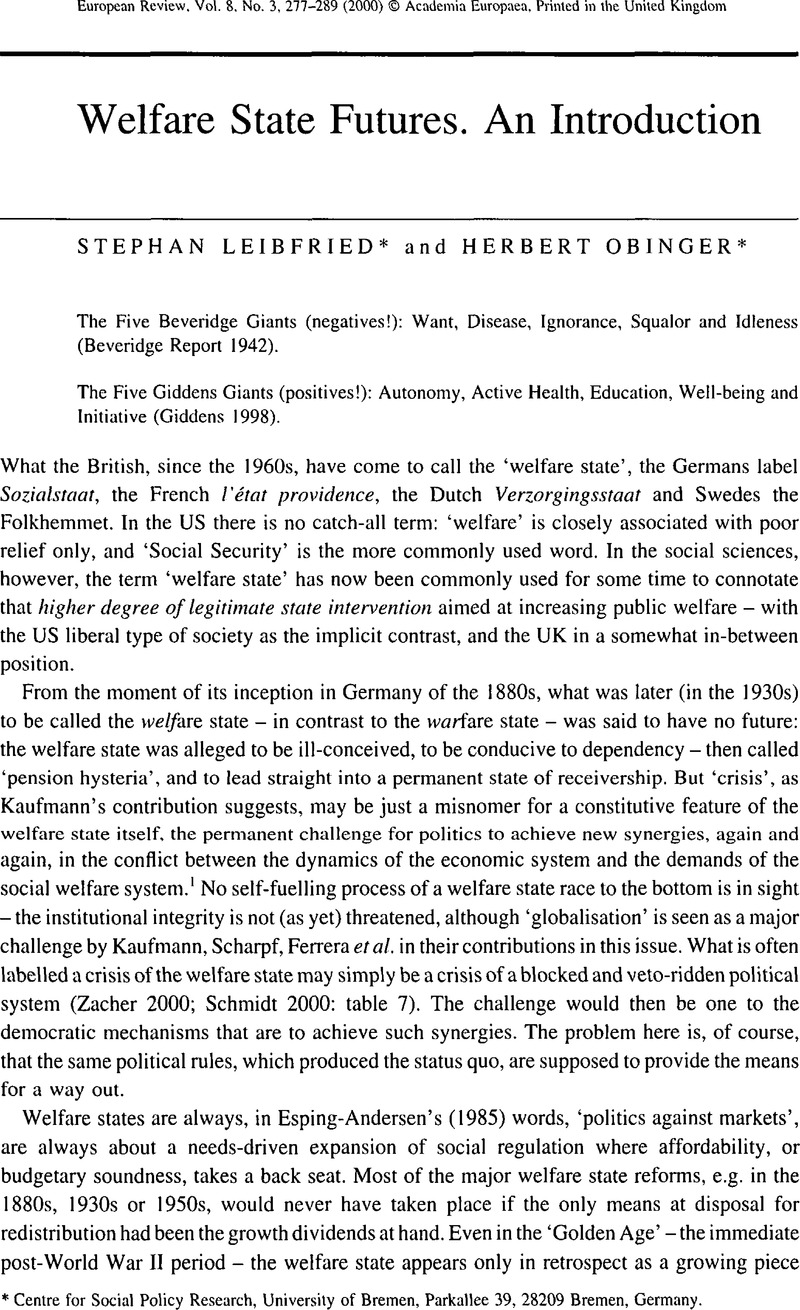Crossref Citations
This article has been cited by the following publications. This list is generated based on data provided by Crossref.
Palier, Bruno
2001.
Does europe matter ?.
Politique européenne,
Vol. n° 2,
Issue. 1,
p.
7.
Geyer, Robert R.
2003.
Globalization, Europeanization, Complexity, and the Future of Scandinavian Exceptionalism.
Governance,
Vol. 16,
Issue. 4,
p.
559.
Mandin, Christelle
and
Palier, Bruno
2004.
L’intégration européenne.
p.
255.
ABRAHAMSON, PETER
2005.
Coping with Urban Poverty: Changing Citizenship in Europe?.
International Journal of Urban and Regional Research,
Vol. 29,
Issue. 3,
p.
608.
Abrahamson, Peter
2005.
La fin du modèle scandinave ? La réforme de la protection sociale dans les pays nordiques.
Revue française des affaires sociales,
p.
105.
Palier, Bruno
2006.
La politique des réformes dans les États providence bismarckiens.
Revue française des affaires sociales,
p.
51.
Palier, Bruno
2006.
The Politics of Reforms in Bismarckian Welfare Systems.
Revue française des affaires sociales,
p.
047.
Abrahamson, Peter
2007.
Reconciliation of work and family life in Europe: A case study of Denmark, France, Germany and the United Kingdom.
Journal of Comparative Policy Analysis: Research and Practice,
Vol. 9,
Issue. 2,
p.
193.
Abrahamson, Peter
2012.
Developmental Politics in Transition.
p.
92.
Newsome, Lucie
2017.
Female leadership and welfare state reform: the development of Australia’s first national paid parental leave scheme.
Australian Journal of Political Science,
Vol. 52,
Issue. 4,
p.
537.
Newsome, Lucie
2021.
Gender and Citizenship in Australia: Government Approaches to Paid Parental Leave Policy 1996–2017.
Social Politics: International Studies in Gender, State & Society,
Vol. 28,
Issue. 2,
p.
477.
Ledoux, Clémence
Shire, Karen
and
van Hooren, Franca
2021.
The Dynamics of Welfare Markets.
p.
3.





